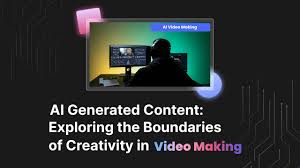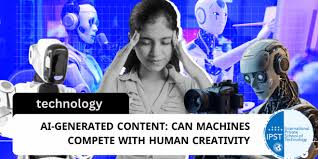
Artificial Intelligence (AI) is rapidly transforming creative industries—from writing and art to music and video production. By 2025, AI-generated content is everywhere, raising a fascinating and complex question: Who owns the creativity when a machine produces the work?
This debate touches on copyright law, ethical considerations, and the future of intellectual property. Let’s explore the issues surrounding AI creativity and what it means for creators, businesses, and consumers.
1. What Is AI-Generated Content?
AI-generated content refers to any media—text, images, music, or video—produced or significantly assisted by artificial intelligence algorithms. These systems use vast datasets and machine learning models to mimic human creativity, often producing outputs indistinguishable from human-made work.
Examples include:
- AI-written articles and stories.
- Computer-generated artwork and designs.
- Music compositions created by AI.
- Deepfake videos and synthetic voices.
AI acts as a tool—but with growing autonomy—in the creative process.
2. The Question of Ownership
Traditionally, copyright law protects original works created by humans. But AI complicates this:
- If AI produces a piece of writing or art with minimal human input, can it be copyrighted?
- Who holds the rights—the programmer, the user who prompted the AI, or the AI itself (which currently has no legal personhood)?
- How do we value the human creativity involved in training AI models versus the AI’s generated output?
Legal frameworks worldwide are still grappling with these questions.
3. Ethical and Economic Considerations
Ownership affects:
- Creators’ rights and royalties: If AI can produce work cheaply and quickly, what happens to human artists, writers, and musicians?
- Authenticity and attribution: Should AI-generated content disclose its origins?
- Innovation incentives: Clear ownership encourages investment in creative industries.
- Cultural impact: How do we preserve human artistic expression and diversity?
Balancing AI’s benefits with creators’ interests is crucial.
4. Current Legal Landscape
As of 2025, most jurisdictions:
- Do not recognize AI as a legal creator.
- Assign copyright to the human who “controls” or “initiates” the AI output.
- Are developing new policies and guidelines to address AI-generated works.
Some countries are exploring specialized licenses or AI-specific intellectual property rights.
5. Practical Implications for Creators and Businesses
- Creators must understand how AI tools affect their rights and consider how to incorporate AI ethically.
- Businesses using AI content should ensure transparency, respect copyright laws, and negotiate clear contracts.
- Consumers need awareness of AI content origins and quality.
Collaboration between legal experts, technologists, and artists will shape the future.
6. The Future of Creativity and AI
Rather than replacing human creativity, AI may become a powerful collaborator—augmenting imagination and opening new possibilities.
Questions remain:
- How to fairly attribute joint human-AI creations?
- Can AI-generated content be truly original or only derivative?
- What new forms of art and storytelling will emerge?
The evolving relationship between humans and AI will redefine creativity.
Final Thoughts
AI-generated content challenges traditional notions of creativity and ownership, prompting legal, ethical, and cultural reconsiderations. Clear frameworks that balance innovation with protection of human creators are essential as AI becomes an integral part of the creative landscape.
Understanding who owns AI creativity today helps us prepare for a future where human and machine imagination work hand in hand.
